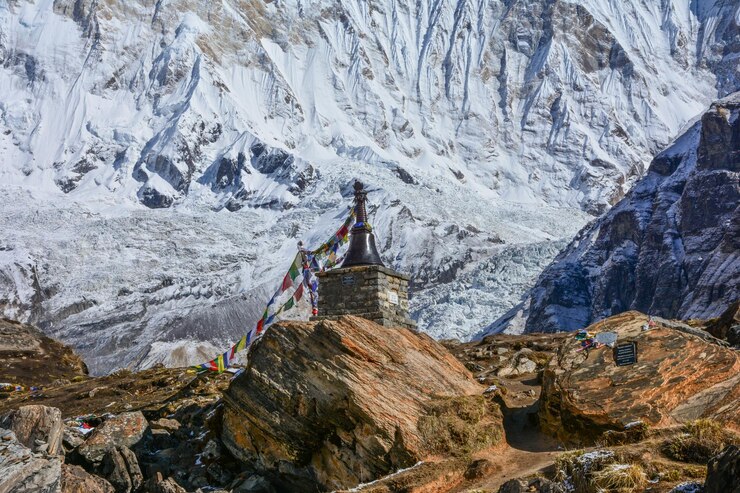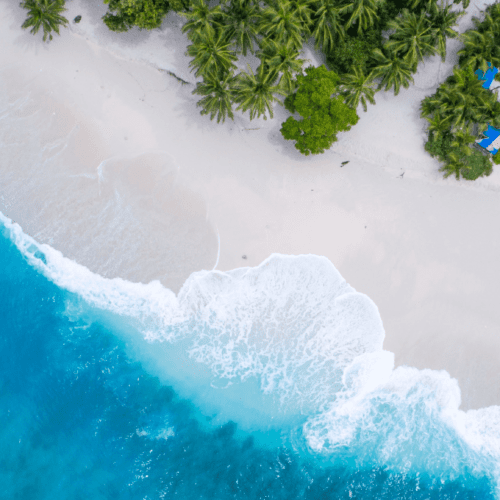Nepal weather by month
Table of Contents
Nepal weather by month
Understanding Nepal weather by month is crucial for anyone planning a trip to this stunning country. Whether you’re trekking in the Himalayas, exploring cultural sites in Kathmandu, or enjoying the wildlife in Chitwan, knowing the monthly weather in Nepal can make all the difference. Nepal’s climate patterns vary greatly based on geography and altitude, meaning that the weather can be completely different depending on where you are.
This detailed guide will provide you with an in-depth look at the Nepal weather by month, focusing on average temperatures in Nepal, monsoon and dry seasons in Nepal, and Nepal seasonal changes. Whether you’re visiting during the dry season for trekking or the monsoon for cultural exploration, this guide will help you plan the perfect trip, no matter the weather. Keep reading for insights into how the weather changes each month in Nepal.
Nepal’s Climate Patterns and Regional Variations

Nepal’s weather varies significantly depending on the region, thanks to its diverse geography. From the scorching heat of the Terai plains to the snow-capped peaks of the Himalayas, the Nepal climate patterns are influenced by altitude, location, and seasonal changes. Understanding these variations will help you choose the best destinations and activities for your trip.
- Terai Region:
The lowland Terai region is known for its hot summers and mild winters. With an average temperature ranging from 25°C to 35°C during summer, this area experiences relatively stable weather. The Terai is perfect for wildlife safaris, cultural tours, and exploring places like Chitwan National Park. The monthly weather in Nepal here is typically hot and humid during summer but mild and pleasant during winter months. - Hilly Areas (Kathmandu Valley):
The Kathmandu Valley and surrounding hilly areas have a more moderate climate. The monthly weather in Nepal here is generally mild year-round, with daytime temperatures between 15°C and 25°C in most months. The region offers the best of both worlds: pleasant weather for sightseeing and trekking, as well as cultural experiences in the capital city, Kathmandu. These areas experience moderate rainfall during the monsoon season but remain quite comfortable. - Himalayan Region:
The Himalayan region experiences the most extreme weather in Nepal. In the higher altitudes, the Nepal weather by month can be harsh, with temperatures plummeting well below freezing during the winter months. During summer, the weather is more temperate, but trekkers need to be prepared for cold winds and sudden snowstorms, especially above 4,000 meters.
Nepal weather by month: Weather Guide for Nepal

Let’s dive into the Nepal weather by month to give you a detailed breakdown of what to expect in each season. Understanding the seasonal changes in Nepal will help you decide the best time to visit, depending on your travel goals.
January–March: Winter and Clear Skies
- Characteristics: The weather is cold but clear, making it ideal for sightseeing and low-altitude treks. This is one of the most stable months, with clear skies offering excellent views of the mountains.
- Activities: Cultural tours around Kathmandu and Pokhara, as well as low-altitude treks to places like Ghorepani and Poon Hill.
- Average temperature: In Kathmandu, daytime highs are around 15°C–20°C, with nighttime temperatures dropping to 2°C. The average temperature in Nepal is cooler in higher altitudes, where it can dip below freezing.
- Tips: Pack warm clothing and layers for fluctuating temperatures, especially in the mornings and evenings.
April–June: Pre-Monsoon Heat
- Characteristics: Temperatures start to rise, and the weather becomes warmer with occasional pre-monsoon haze in the valleys.
- Activities: Great for trekking, especially in areas like the Annapurna Circuit, where the rhododendron forests begin to bloom.
- Average temperature: Daytime temperatures range from 20°C to 30°C in Kathmandu, with higher elevations staying cooler.
- Tips: Light clothing with a waterproof jacket, as occasional rain showers are possible. This is the start of the pre-monsoon period, so humidity levels begin to increase.
July–September: Monsoon Season
- Characteristics: Heavy rainfall and humidity, leading to a wet environment. This is also the time when landslides may disrupt transportation and trekking routes.
- Activities: Visit rain-shadow areas like Mustang, which remains dry even during the monsoon.
- Average temperature: Rainfall peaks, with Kathmandu experiencing around 300mm of rain per month. Daytime temperatures remain in the range of 22°C–30°C.
Tips: Be prepared for delays and disruptions. Plan your trekking routes carefully, and pack waterproof gear. If you’re in the Terai or Kathmandu Valley, expect significant rainfall during this season.
October–December: Autumn and Peak Trekking Season
- Characteristics: The monsoon rains end, leaving behind clear skies and excellent visibility. This is considered the best time to visit Nepal for trekking and outdoor activities, as the weather is stable and pleasant.
- Activities: Trekking in the Everest or Annapurna regions, cultural exploration, and participating in local festivals like Dasain and Tihar.
- Average temperature: Daytime highs of 20°C–25°C in Kathmandu, with cooler nights around 10°C.
- Tips: Bring layers for varying temperatures, as days are warm but nights can be chilly. This is also the busiest season, so book accommodations and flights well in advance.
Nepal’s Monsoon and Dry Seasons

One of the key factors in understanding Nepal weather by month is knowing the monsoon and dry seasons in Nepal. These two seasons significantly impact your travel plans, especially if you’re planning to trek.
- Monsoon Season (June–September):
During this period, heavy rainfall affects many parts of the country. The wet conditions can cause flight delays, muddy trails, and challenging trekking conditions. However, you can still enjoy the cultural side of Nepal by visiting cities and towns unaffected by the rains, like the rain-shadow region of Mustang. The monsoon season sees the highest humidity levels, which can make trekking challenging, but it also brings lush landscapes. - Dry Season (October–May):
The dry season is perfect for trekking, outdoor activities, and exploring Nepal’s cultural heritage. The clear skies offer stunning mountain views, and the moderate temperatures make trekking comfortable. It’s also the best time for wildlife safaris in places like Chitwan and Bardia National Park, where you can explore Nepal’s wildlife in pleasant weather.
Seasonal Changes and Travel Tips
Here are some key travel tips to help you navigate the seasonal changes in Nepal based on the Nepal weather by month:
- Packing Essentials:
- Winter (Dec–Feb): Warm clothing, including thermal layers and jackets.
- Monsoon (Jun–Sep): Waterproof gear, including jackets, shoes, and bags.
- Spring (Mar–May): Light clothing with layers, as temperatures can vary.
- Autumn (Oct–Nov): Comfortable trekking gear, including hats, gloves, and light jackets for the evenings.
- Travel Precautions:
- Winter: Avoid high-altitude treks in the Himalayas unless you’re prepared for extreme cold.
- Monsoon: Be flexible with your itinerary, as rain may cause travel disruptions.
- Spring and Autumn: Ideal for trekking and outdoor activities, but make sure to book accommodations and flights in advance during peak seasons.
Average Temperature in Nepal by Region
Below is a summary of the average temperature in Nepal by region and month:
Month | Kathmandu (°C) | Pokhara (°C) | Chitwan (°C) | Everest Base Camp (°C) |
January | 2–15 | 5–16 | 10–25 | -10 to -20 |
April | 10–20 | 13–22 | 18–32 | -5 to -10 |
July | 22–30 | 23–32 | 25–35 | -2 to -5 |
October | 10–25 | 12–24 | 15–30 | -5 to -10 |
Personalized Travel Planning with QXP India
At QXP India, we specialize in creating personalized itineraries for travelers to Nepal. Whether you’re trekking in the Himalayas, exploring cultural sites, or enjoying a wildlife safari, our experts will tailor your trip based on your preferences and the Nepal weather by month.
- CTA: Explore Nepal with QXP India! Let us create a personalized itinerary for your dream Nepal adventure.
Visit QXP India’s Nepal travel page for more details.
Frequently Asked Questions
The best time to visit Nepal is during the autumn months of October to December, when the Nepal weather by month is most favorable for trekking and outdoor activities.
In the Himalayas, the average temperature in Nepal can drop significantly, especially in winter, where temperatures can fall below freezing. Summers are mild, but weather conditions can change rapidly at high altitudes.
Yes, the monsoon season (June–September) brings heavy rainfall, which can make trekking routes slippery and dangerous. However, trekking in rain-shadow regions like Mustang is still possible during the monsoon.
In March, the Nepal weather by month in Kathmandu is mild, with daytime temperatures ranging from 15°C to 25°C.
While winter can be cold, especially in high-altitude regions, areas like Kathmandu and Pokhara offer comfortable temperatures for sightseeing. You can still enjoy trekking at lower altitudes during winter.
July weather in Nepal is typically very rainy, with heavy downpours and high humidity. It’s recommended to avoid trekking during this month unless you’re visiting rain-shadow regions.
Yes, summer months (April to June) can be warm, but it’s an excellent time for trekking at higher altitudes, as the temperatures are mild, and the skies are clear.
Always pack layers and be prepared for unexpected weather changes. Even in the same day, temperatures can fluctuate significantly in Nepal, especially between different regions.
Puneet Khurana
Related Articles
Where is Nepal Located | Best Time to Visit Nepal | What Language is Spoken in Nepal | Places to Visit in Nepal | What are People from Nepal Called | Kathmandu Beautiful Nepal | Best Treks in Nepal | Nepal Weather by Month | What is Nepal Famous For | Is Nepal Safe for Tourists | What is the Religion of Nepal | Trekking in Nepal for Beginners | Travel to Nepal from USA | Monsoon Season in Nepal | Nepal Adventure Travel Options | Nepal Sightseeing Highlights | Nepal Travel Guide for Beginners | Religion and Culture in Nepal | Scenic Spots in Nepal for Photographers | Top Attractions in Kathmandu and Nepal









